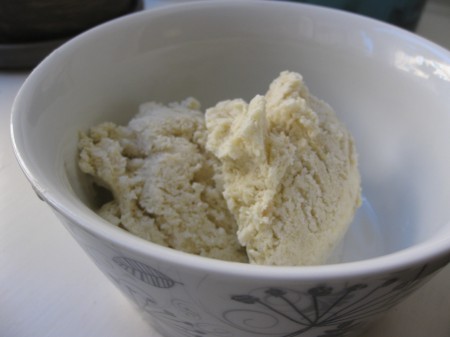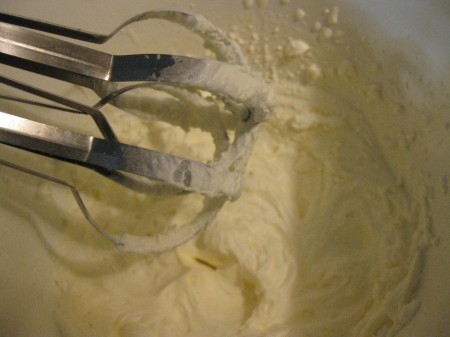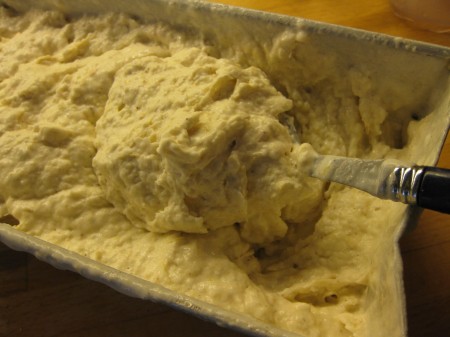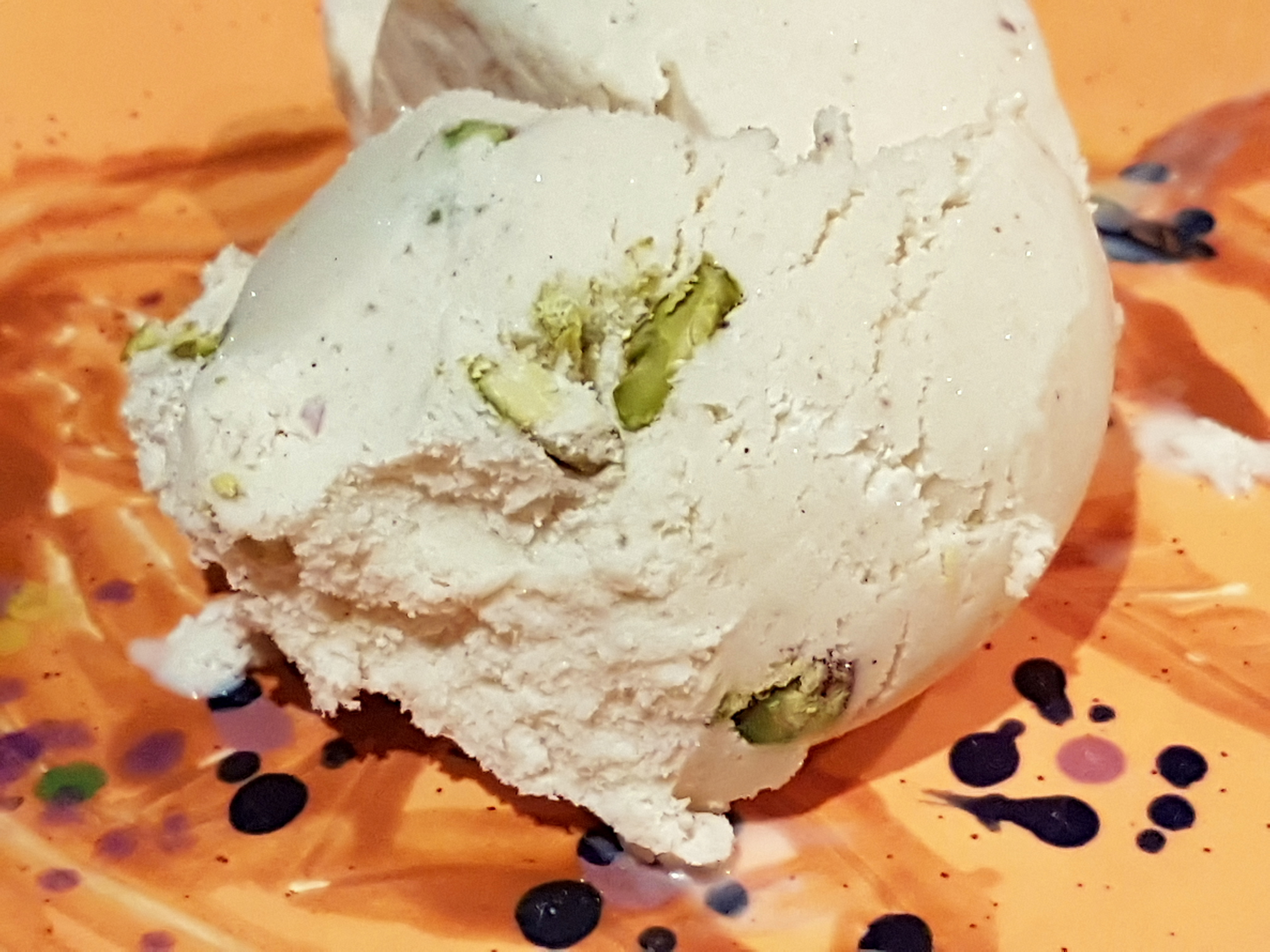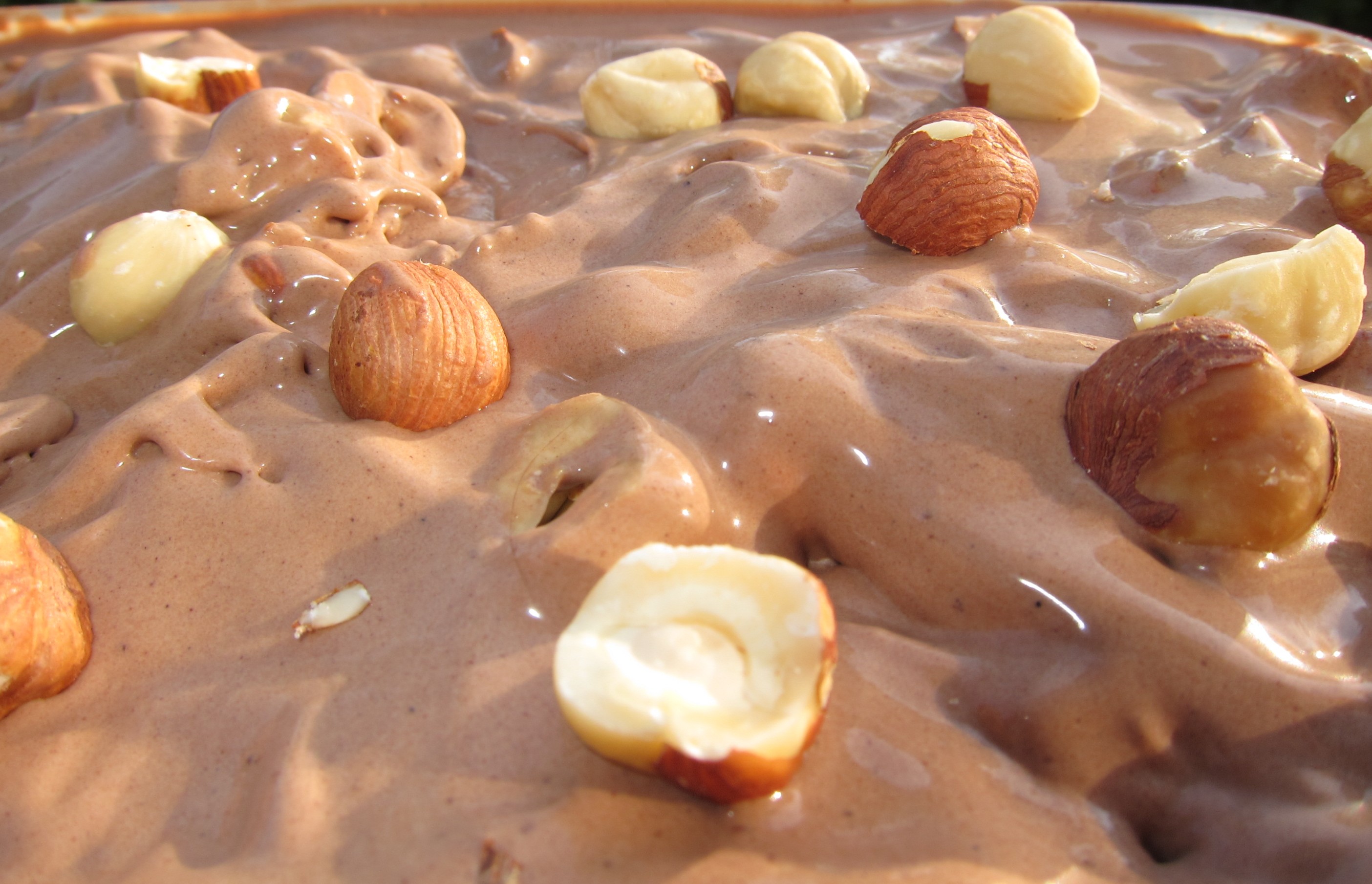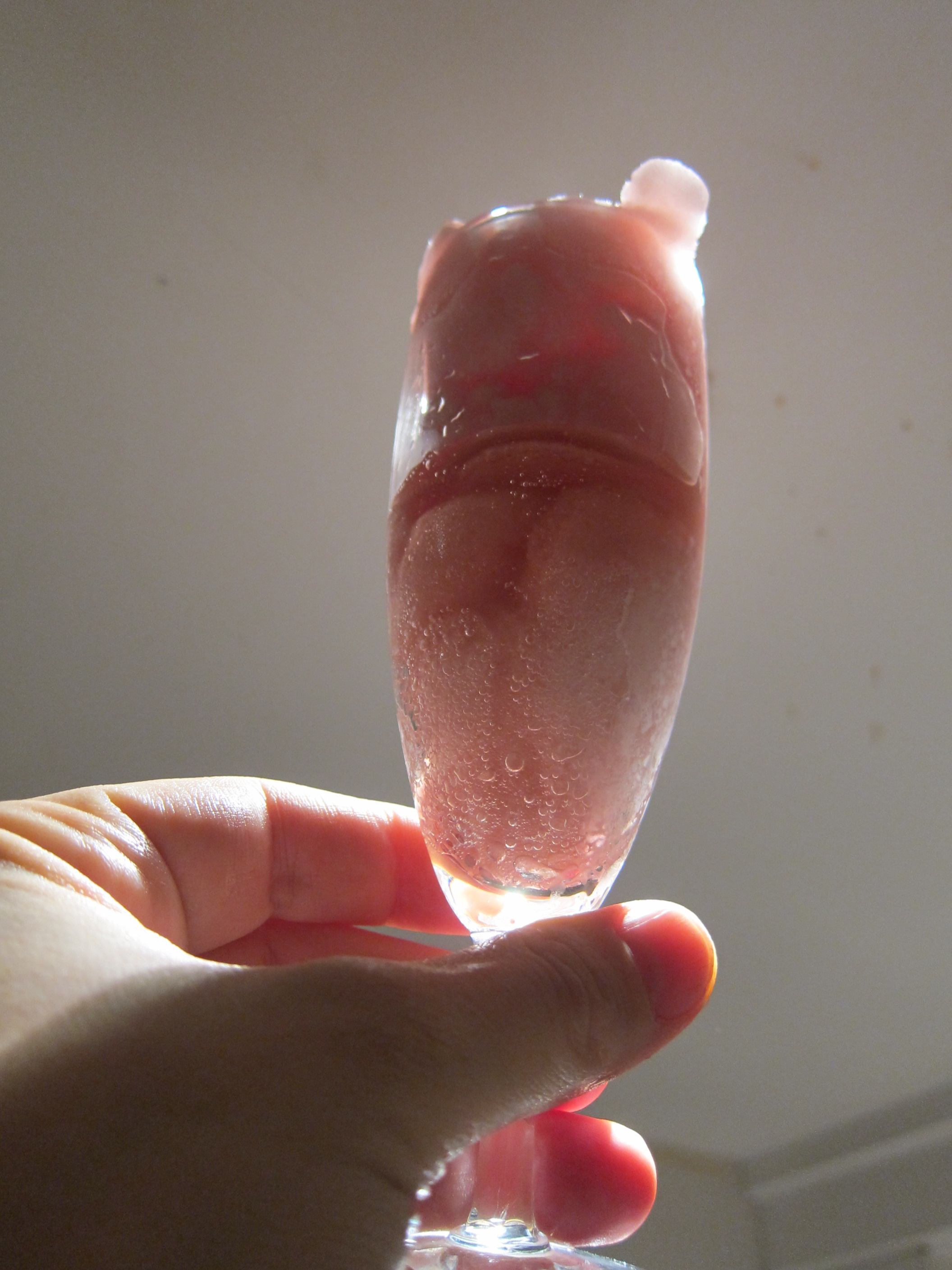In search of “smooth” (II) – the creamy part
Remember my earlier attempt to create “smooth” yoghurt ice cream with the help of honey? Back to the urban civilisation, but still without an ice cream machine, I decided to see whether honest dairy cream would be able to make the crucial difference.
While many still-frozen ice cream recipes basically calls for nothing else but cream (when it comes to the dairy part), I wanted to see if it was possible to make something less fat, and still get a good texture out of it. After all, it was not frozen mousse or parfait which I was after (which, arguably, is what you get if you mainly freeze whipped cream). This time, taking a cue from my first experiment, I decided to mix yoghurt and some whipped cream.
Being very fond of the particular and tart flavour of rhubarb, inspired by a post by Jessica Sidman of the Frozen fix and an often-used (by me, definitely!) recipe by Alex Barker, from his book “500 Ice Creams, Sorbets & Gelatos“, I settled for rhubarb yoghurt ice cream.
Intentionally cutting down on the original amount of cream, thus balancing on the lower end of the “fatty scale”, my recipe looked like this:
- 350 ml (1.5 cups) yoghurt (preferably 10% greek-style, if no ice cream machine is used)
- 250 ml (1 cup) cream (whipped)
- 150 ml (0.6 cup) sugar
- about 400 gram rhubarb (about 3 large stalks)
- ½ teaspoon ground cinnamon
- 1 teaspoon good quality vanilla extract
- Peel the rhubarb and cut up the stalks in pieces (of about 1 cm length).
- Put in saucepan together with the sugar, the ground cinnamon and the vanilla extract.
- On medium-low heat, cook down the rhubarb/sugar to a purée (or at least soft enough to purée with a mixer, if you are using one) while stirring every now and then.
- Take off from the heat and let cool. When cooled down, chill in the refrigerator.
- When the rhubarb-purée is thoroughly chilled, mix it well together with the whipped cream and the yoghurt.
- Pour the mixture in a suitable, covered container and put in the freezer. After about 30-45 minutes, take out the ice cream base and churn it well with a fork or other suitable tool.
- Return the ice cream base to the freezer. Repeat the hand-churning every 30-45 minutes for 2-3 more times, making sure to churn more vigorously the firmer the ice cream becomes.
- Before serving the ice cream, make sure to take it out from the freezer at least 20-30 minutes before serving time to let it soften up.
The verdict?
On the positive side, in terms of “smooth” and “not so icy”, this yoghurt ice cream did much better than my previous attempt with yoghurt and honey. While this one also froze pretty hard, it softened in a better way and also had an improved mouthfeel. But make no mistake – this is a great ice cream, particularly if enjoyed fresh (and still not frozen too solid)!
Also, if you prepare the ice cream with an ice cream machine, you could well use “ordinary” yoghurt, instead of the fat, Greek-style yoghurt proposed here.
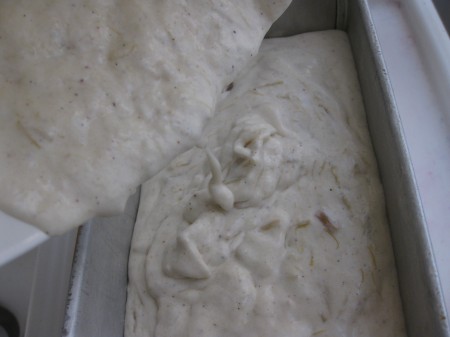
The ice cream base just about to enter the freezer for the first time. Notice the shamelessly large pieces of rhubarb coming out of my “no mixer-used” purée. But then, I don’t really mind:-)
On the negative side, and despite the relative progress noted above, even this recipe proved to freeze just a bit too firmly, and resulting in a bit too many of the structure leaning towards “icy” to truly qualify for the label “smooth”: Obviously still an ice cream best enjoyed soon after the preparation!
More fat, even more sugar or an added stabiliser could possibly be ways to improve the recipe. However, I was not too tempted to try the first two routes.
Making ice cream mainly on the basis of still-frozen, whipped cream is more of a (French-style) parfait to me than “ice cream”. These can be exquisite – my dear mother makes a couple of such parfaits, and I generally always end up eating unhealthy amounts of them, forgetting that the main ingredient is whipped and frozen cream. But here, my goal was to achieve the ice cream-typical characteristic of “smooth” – turning “ice cream” into “parfait” would simply not cut it.
Granted, quite a lot of yoghurt would have to be replaced in this recipe before whipped cream would rule supreme. However, even at the present amounts the particular “frozen whipped cream”-consistency and flavour was detectable. Freezing the base quicker (i e typically using an ice cream machine) would likely improve things, but this was no option during this still-freezing quest.
More sugar, then? In my view, the seductive rhubarb flavour was already rightly balanced in terms of sweetness. In future try-outs, I would probably rather experiment with replacing some of the existing sugar with (some type of) inverted sugar. If no kids were to taste the ice cream, I could also consider adding a little alcohol to impede the freezing process. I decided, however, that the next attempt would be based upon a stabiliser.
Stay tuned for the next attempt in search of “smooth”! [Update: Can be found via this link!]
